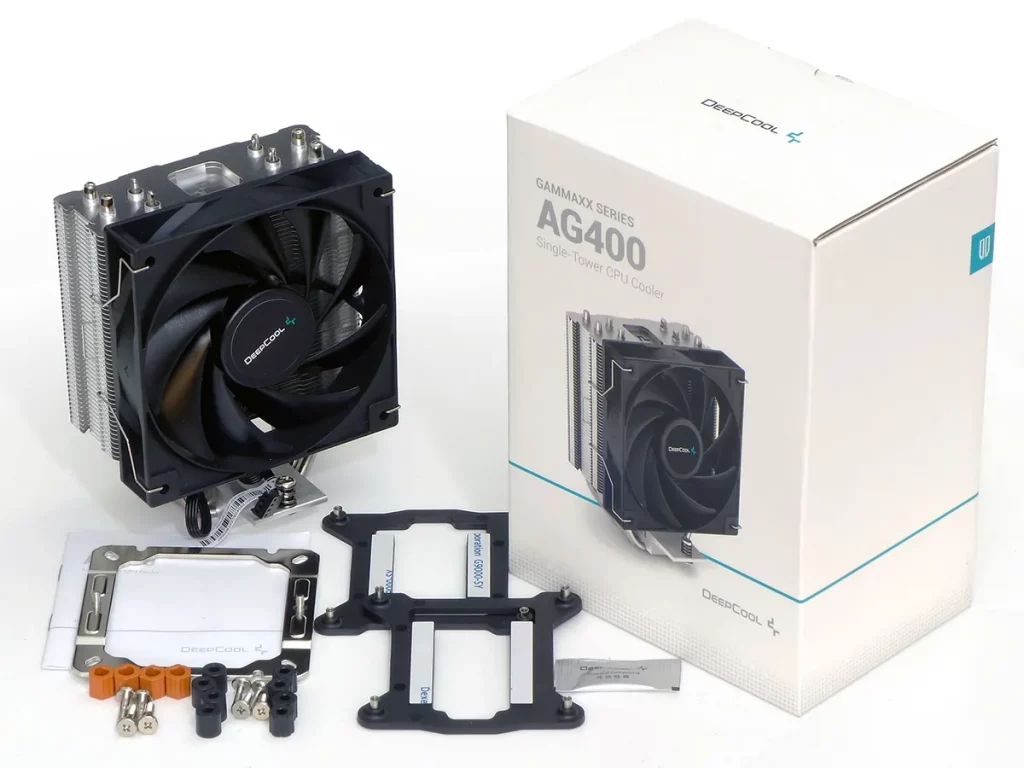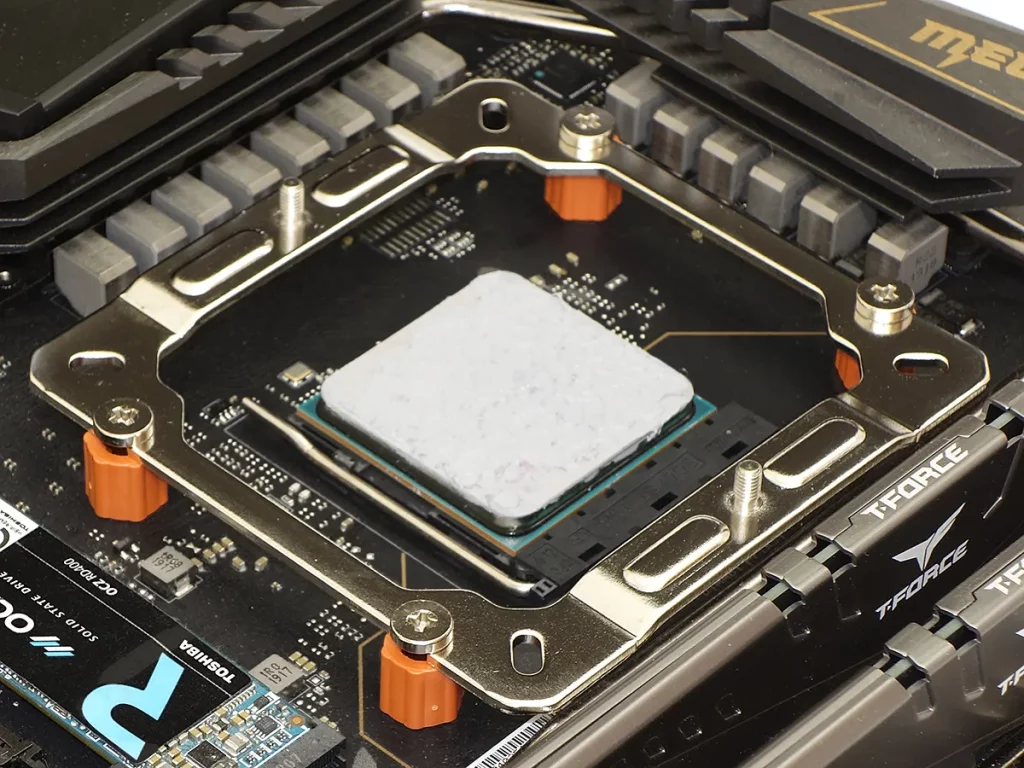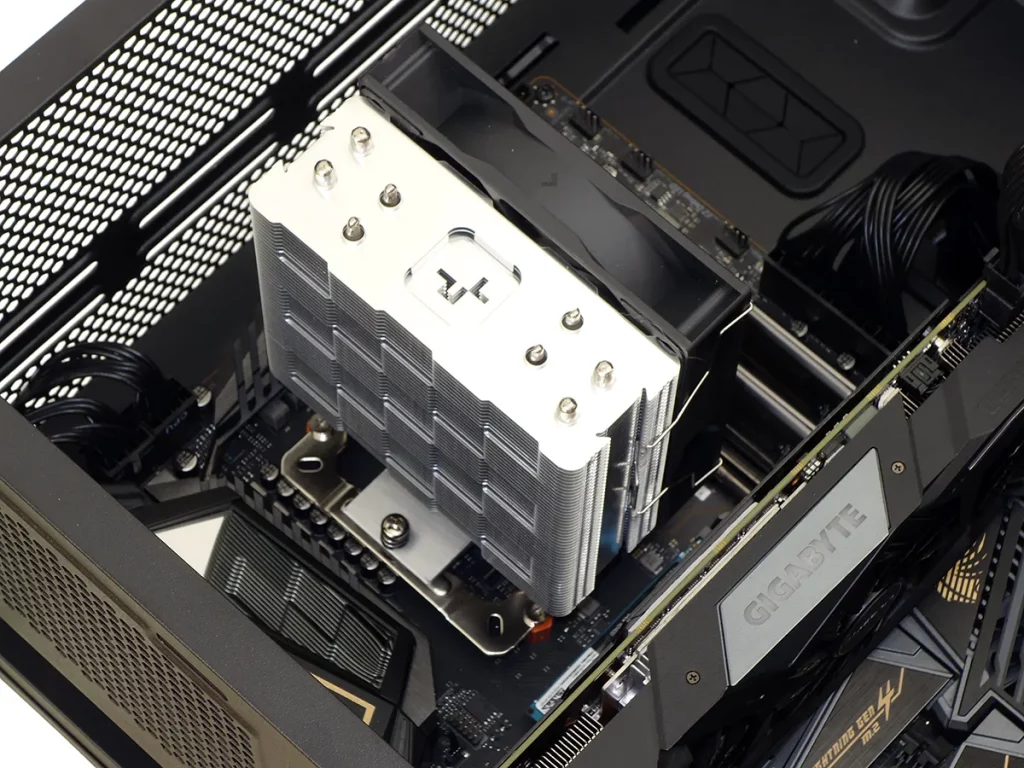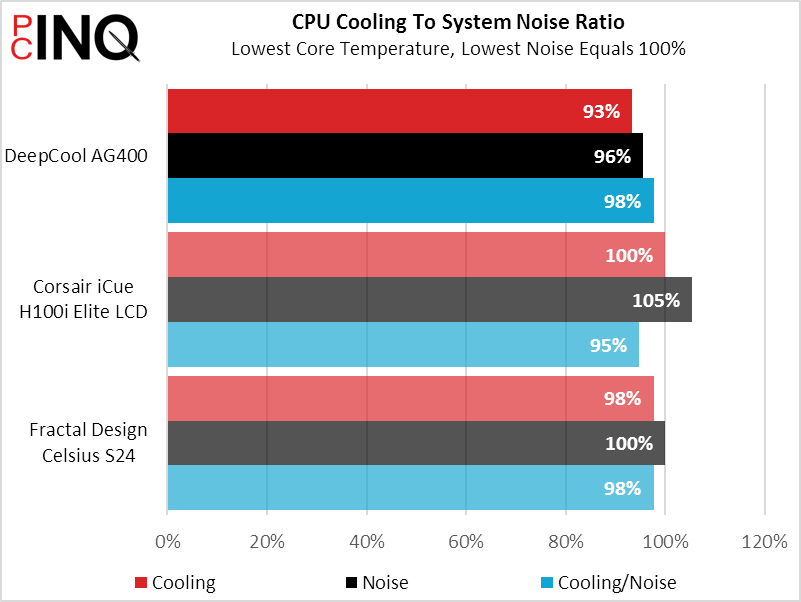DeepCool Gammaxx AG400 CPU Cooler Review
Weighing in at just over a pound, the Gammaxx AG400 from DeepCool targets value-seeking buyers with mainstream desktop sockets by including AM5 (launched 2022) and AMD’s AM4 (launched 2016) as well as Intel’s LGA 1700 (2021), 1200 (2020) and entire 115x series (beginning with 1156 in 2008). We’d call that a broad swath of the market.
| DeepCool Gammaxx AG400 | |||
| Type | Cross Draft Single Tower | Offsets | 25mm rearward (0mm w/fan) |
| CPU Support | LGA 1700/1200/115x, AM5/4 | Fan Size | 120mm x 25mm |
| Height/Width/Depth | 154mm / 121mm / 70mm | Connectors | (1) PWM |
| Base Height | 35mm | Weight | 501g (18oz) |
Get it at Amazon

(click for availability)

Two things that immediately impress us about the AG400 is how little we get and how little you pay. For its $20 asking price, the most impressive detail is the inclusion of separate 1700 and 1200/115x brackets in a market that usually packs a single adjustable bracket. Inside the box we also find three spacer kits (AM4/AM5, LGA 1700 and LGA1200/115x), an adapter ring, and a packet of thermal paste.

The cooler features a 3D design of staggered fins and a recessed “DeepCool” logo, with four heat pipes carrying the CPU’s heat away from the base and up toward the pressed-on fin stack. A wire clip on each side holds the ~2040 RPM 120mm x 25mm fan.

Direct-contact heat pipes reduce latent heat and manufacturing cost, but at some cost in smoothness compared to flat copper bases. Deepcool’s supplier does a great job of getting its base nearly flat with very little “grain” from grinding and/or sanding , but we still made sure to fill all the tiny crevices with thermal compound before mounting the cooler.

AMD installations replace the motherboard’s clip brackets with DeepCool-supplied spacers and top bracket. DeepCool also supplies the screws to secure these parts to the motherboard’s back bracket.

Since the AG400’s mounting bracket only fits the motherboard in one orientation and its cooler only fits that bracket in one orientation, flow direction depends primarily upon which way the socket is turned. Also, while the heatsink and fan have only a combined 70mm thickness, the aluminum base is 92mm deep.

We’re using the test system from our Corsair iCue H100i Elite LCD Review to see how the little AG400 stands up against larger parts when paired with a CPU of typically poor internal thermal conductivity.
| System Configuration | |
| Case | Cooler Master MasterBox TD500 Mesh |
| CPU | AMD Ryzen 7 3700X: 8 cores/ 16 threads, 32MB L3 Cache O/C to 4.20 GHz (42x 100 MHz) at 1.3625 V Core |
| Motherboard | MSI X570 Ace: AMD X570, Socket AM4 |
| RAM | T-Force Vulcan Z TLZGD416G3200HC16CDC0 DDR4-3200 |
| Graphics | Gigabyte GeForce RTX 2070 Gaming OC 8G: GeForce RTX 2070 1815 MHz GPU, GDDR6-14000, Maximum Fan When Listed |
| Hard Drives | Toshiba OCZ RD400 256GB NVMe SSD |
| Sound | Integrated HD Audio |
| Network | Integrated Gigabit Networking |
| Power | Cooler Master XG 750 Plus Plantinum: Fully modular, 80Plus Platinum |
| Test Configuration | |
| Load Software | Prime95 Version 30.7 Torture Test, Small FFTs |
| H/W Monitoring | HWiNFO64 v6.28-4200 |
| SPL Monitoring | Galaxy CM-140 SPL Meter: Tested at 1/4 m, corrected to 1 m (-12 dB) |
Our system needed a few minutes for the new heat sink to sink through the thin layer of thermal paste and make metal-to-metal contact with the CPU’s heat spreader, after which the CPU core to heat spreader interface becomes a noticeable constraint. Temperature differences are only on the order of five °C despite the H100i Elite LCD’s two-fan radiator.

MOSFET coolers are designed to take advantage of the airflow from a nearby CPU fan, so it’s not surprising to see the AG400 win this test. Voltage regulator temperatures would have looked worse for the liquid coolers had the radiator fans not been mounted in such close proximity to the top of the motherboard.

The AG400’s fan pitch isn’t bothersome, but its sound pressure level is certainly noticeable when tested on an open bench. We test internal component noise that way to eliminate the sounds of other system components.

With less cooling and less noise than the coolers to which it’s being compared, the AG400’s overall performance puts value on its low price.

| DeepCool Gammaxx AG400 | |
| Pros: | Cons: |
|
|
| The Verdict: | |
| The Gammaxx AG400 provided all the cooling our Ryzen 7 test platform would ever need at a low cost. | |
The Gammaxx AG400 doesn’t have any of the advanced features of the coolers we compared today, but it also costs 1/6 the price of the cheapest one. While we wouldn’t recommend it for a fully stressed Core i9 or Ryzen 9, a level of cooling that exceeded the needs of our overclocked Ryzen 7 makes us confident in its value for most builders.

